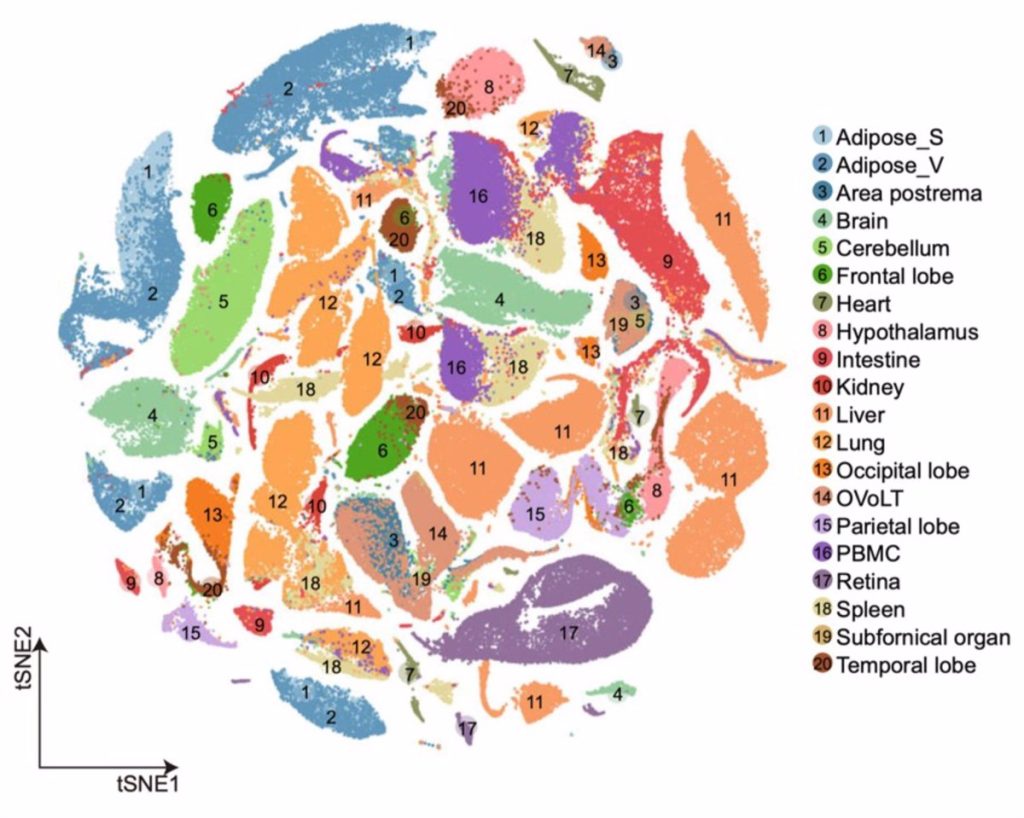(Information sent by the signatory company)
An international research team from BGI-Research has created the world’s first whole-body single-cell transcription atlas of the pig. The transcriptome contains 222,526 cells from 20 tissues/organs, providing a better understanding of biomedical similarities as well as differences between pigs and humans and promoting the use of pigs in biomedical research. The study was published in Nature Communications https://go.nature.com/3ImdmRR
Pigs are a valuable large animal model for biomedical and genetic research. They are also a wonderful and promising surrogate donor for humans due to their great similarities in physiology, anatomy, genetics, metabolism, and organ size.
The atlas of the single-celled whole-body transcriptome will allow scientists to gain insight into the similarities and differences in biomedical and cellular functions between pigs and humans. To this end, the mapping results have been published via the Pig Single Cell Atlas database at Aarhus University, Denmark, for comparative scientific analysis and data exploration.
“Single-cell research is changing our understanding of tissue and organ function at the cellular level,” explains Yonglun Luo of BGI-Research and lead author of the study. “In this study, we identified 234 cell groups representing 58 major cell types that explain the common and tissue-specific functions between tissues and advance our understanding of organ development and function.”
The international research team led by BGI included scientists from the Chinese Academy of Sciences, Aarhus University (Denmark), Karolinska Institutet (Sweden), Leuven Cancer Institute (Belgium), among others. The team identified tissue-specific cell types such as vascular endothelial cells, immune cells and microglia by analyzing brain regions and tissues at the single-cell level. This revealed the cellular structures and heterogeneity of internal and external organs, which provided the opportunity to study organ development, physiology and plasticity in general.
Mapping of pig organs shows transcriptional cellular heterogeneity in each tissue by expanding the functions of cell types between tissues and identifying rare cell types. This provides an important resource for better understanding pig biology, transplantation, evolution, and development, as well as research in the field of regenerative medicine.
Contact
Contact name: BGI Group
Contact description: BGI Group
Contact phone: +8675536307888

“Beer enthusiast. Subtly charming alcohol junkie. Wannabe internet buff. Typical pop culture lover.”


:quality(85)/cloudfront-us-east-1.images.arcpublishing.com/infobae/6XR2PNTY7VCJZGKAL7C4XYDFSY.png)




More Stories
WhatsApp is preparing a function that promises to end spam and virtual scams
Leica returns to mobile photography in Latin America with the help of Xiaomi with the Xiaomi 14 Ultra
xQc finds out how much money has been spent on his Steam account. “I thought it would be much less.”